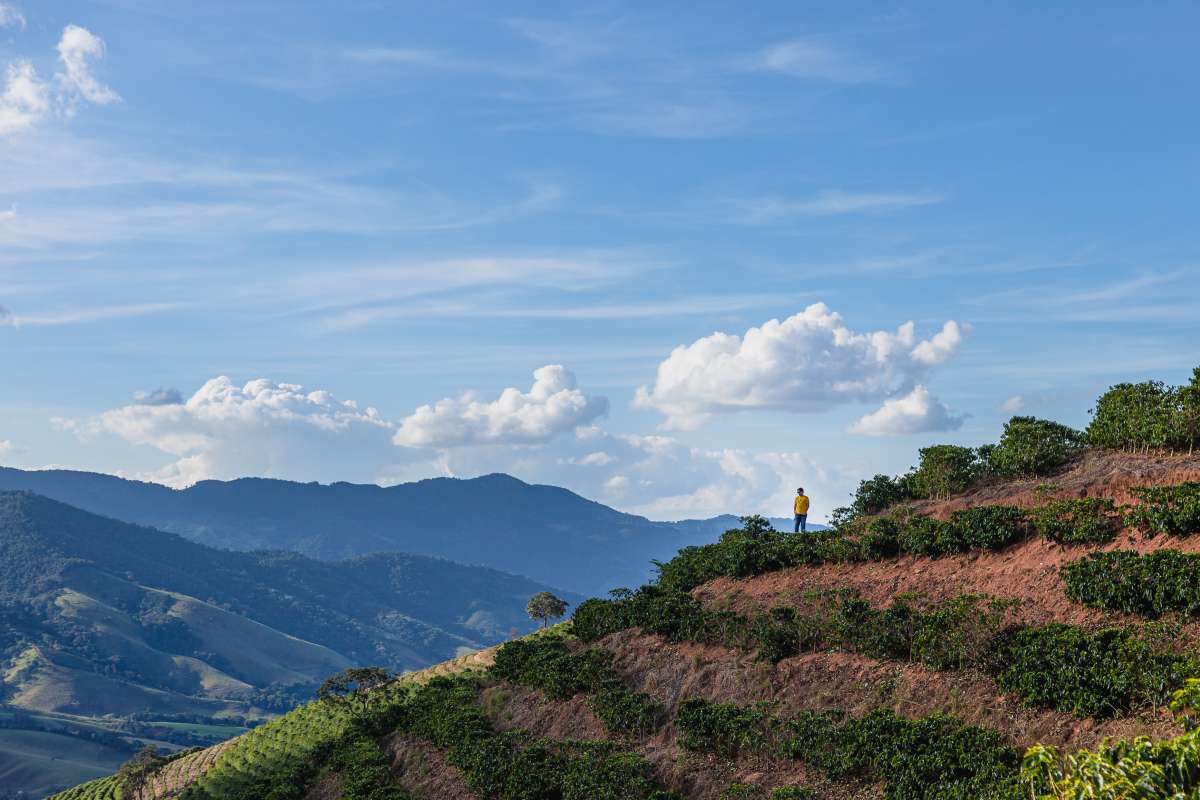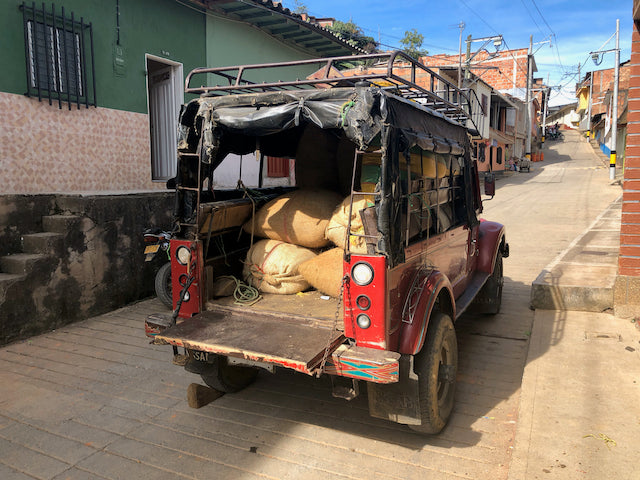Brazil, now growing about a third of the world’s coffee, became a dominant producing country in the mid-1800s as crop disease forced the decline of other historic powerhouses like Java and Ceylon. Brazil was already equipped for large-scale agriculture by a notoriously brutal sugarcane industry, and with large, relatively flat swaths of land suitable for growing coffee, it became known for its ability to produce huge quantities of mild-tasting coffee cheaply and efficiently.
To harvest such large quantities, the practice of strip picking reigns supreme: instead of hand-selecting individual coffee fruits as they ripen, entire branches or even rows of coffee are picked all at once, often using mechanized harvesters, and then sorted for ripeness prior to processing. Brazil is unique in its tendency to process coffee primarily using the “natural” method, in which coffee is dried with its entire fruit still intact, or the “pulped natural” method, in which the fruit pulp is removed but a layer of sticky mucilage is left attached.
Both methods result in heavier body and subtler acidity than we’d expect from the “washed” coffees more common in other parts of the world. Along with Brazil’s elevations, latitudes, nutrient-rich terra roxa soils, and climate, these styles of processing are responsible for the chocolate and roasted nut flavors for which its coffees are celebrated.
Today, innovative producers in regions like Carmo de Minas are setting a new and well-deserved reputation for high-quality Brazilian coffee, and despite the country’s reputation for scale and consistency, diverse microregions and exciting flavor profiles are continually emerging.
This is our first year purchasing Alta Vista's coffee. Sourcing was made possible by Carmo Coffees, our long-time export partners in Brazil. Carmo's people, their farms, their processing, their innovations, and ultimately the quality of coffee they produce are unparalleled. We've long been aware of Alta Vista's outstanding reputation and we're thrilled to be serving this excellent coffee.







Leave a comment
This site is protected by hCaptcha and the hCaptcha Privacy Policy and Terms of Service apply.